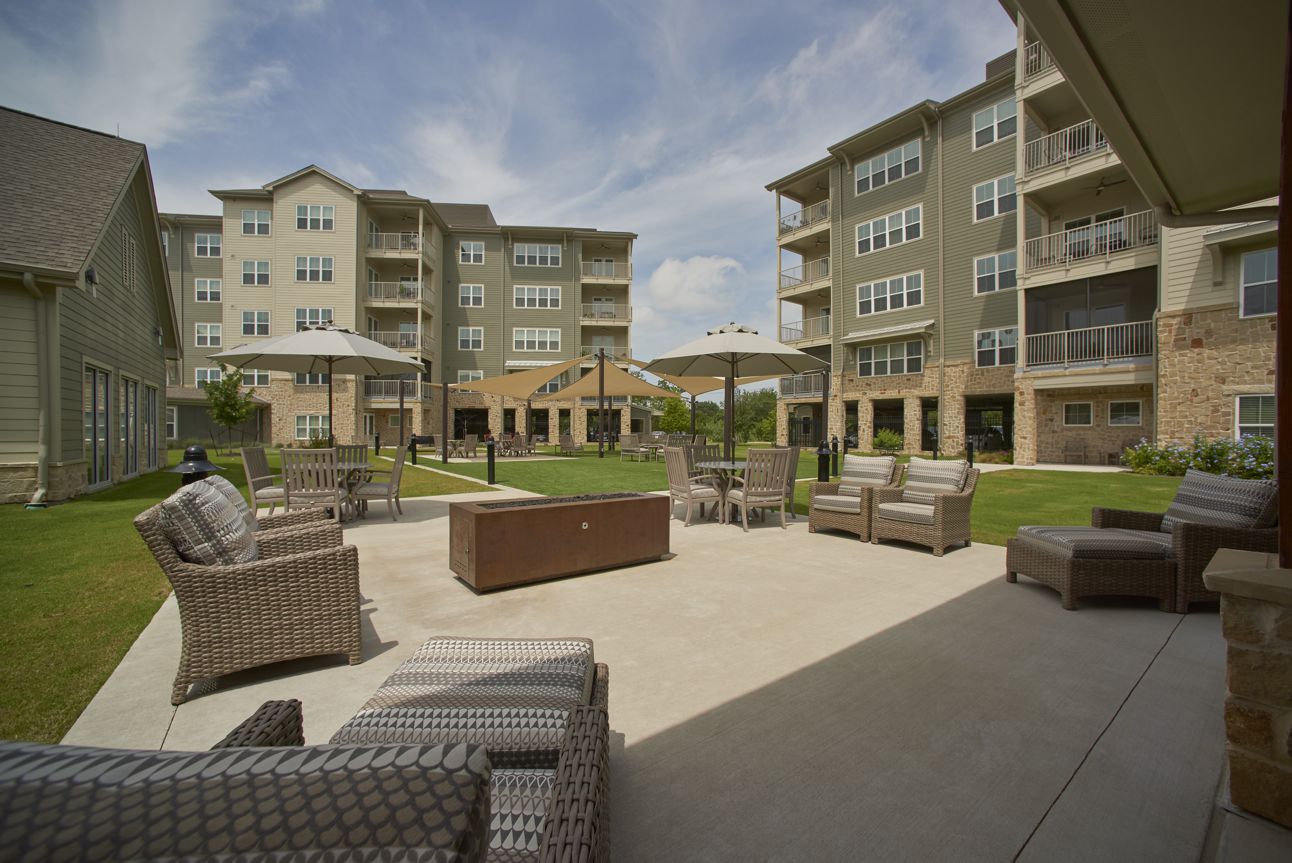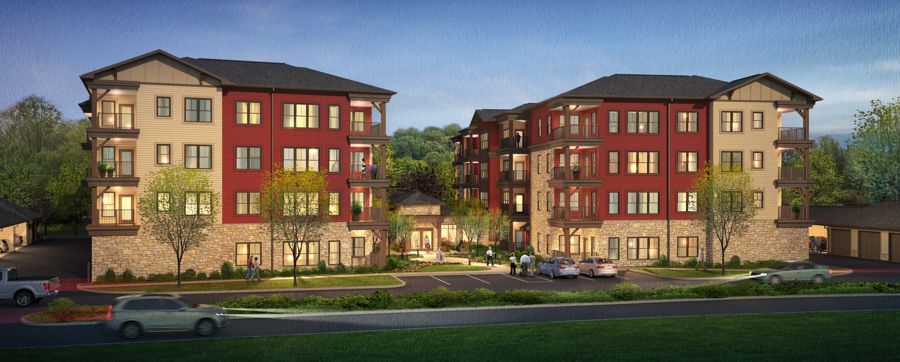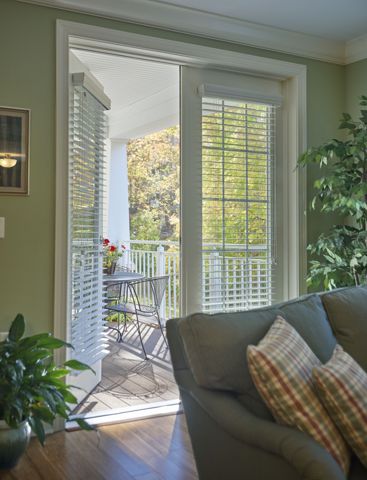Posts
The Evolution of A Senior Housing Model: Hybrid Homes™ 2.0
April 10, 2019 Hybrid homes™ evolved as a new senior housing model that enabled providers to incrementally add independent housing with more flexible financing options and the potential for a la carte service offerings with a higher density footprint than stand-alone cottages. This senior housing model appeals to consumers for its outdoor connections, emphasis on natural light and appealing amenities including covered parking.
Hybrid homes™ evolved as a new senior housing model that enabled providers to incrementally add independent housing with more flexible financing options and the potential for a la carte service offerings with a higher density footprint than stand-alone cottages. This senior housing model appeals to consumers for its outdoor connections, emphasis on natural light and appealing amenities including covered parking.
No two hybrid home models are alike. Each community puts its own spin on the right mix and style of individual units, appropriate scale, regional building materials and optimal layout. This ongoing evolution has led to the development of a new generation of hybrids based on diverse operator needs and consumer demands.
Community Connections
The original hybrid homes were stand-alone buildings, often constructed in pairs, but distinct from the main community center. Typically marketed to more active adults who wanted to maintain their independent lifestyle, the hybrids were separated from campus amenities. To counteract the potential isolation of this approach and strengthen community connections, many of the Hybrid 2.0 models provide covered walkway connections back to the community center.

These new Hybrid 2.0 models marry the two things the younger senior demographic values most: appealing private residences and opt-in socialization. Socialization is something baby boomers view as a choice. Want to share a meal? Invite neighbors over to your kitchen. Want to enjoy a quiet summer evening without interruption? Head to your balcony, deliberately oriented on the corner to be as far from chatty neighbors as possible.
Hybrid homes offer both at the same time—corner units for maximum privacy, yet easy access to community amenities when social interaction is desired. For example, at The Langford at College Station, Texas, we worked with the owner to develop a hybrid home concept that connects to the campus clubhouse building via interior walkways, making it easy for these independent living residents to join in campus activities.
Covered Parking Options

Another Hybrid 2.0 feature is taking a different approach to the covered parking aspect of hybrid homes. At Sycamore Square in Elizabethtown, Pennsylvania, the owner endorsed an adjusted parking design with individual garages, each with its own door, eliminating the need for a full concrete-and-steel floor above the parking level. This market-friendly feature helped to lower the overall construction cost.
Multiple Price Points
New housing for Oakleaf Village in Toledo, Ohio needed to meet consumer expectations for abundant daylight, open floor plans and covered parking while maintaining affordability for older adults in this Midwestern working class area. The design result is two parallel hybrid home apartment buildings with a connected pavilion between them. These three buildings form The Crescent, a micro-community for active seniors that is securing HUD financing to provide affordable rental housing.

The variety of hybrid home options is expected to continue to expand as providers find new ways to customize the model to meet their available property constraints, consumer expectations, individual financial needs and market realities.
To learn more about hybrid homes and their potential for your senior living community, read our latest case study, Hybrid Homes: Evolution in Independent Living available through our Hybrid Homes resource page.
To learn how Hybrid 2.0 Homes might fit your development needs, please Contact Us for more information.
Hybrid Homes™: The Best of Both Worlds
 Emerging ideas in architecture and interior design are creating new models of independent living, pushed by baby boomer seniors who don’t want to sacrifice their lifestyles and love of outdoor spaces to move into a senior living community. One design solution that has been popping up at communities across the county is the hybrid homes™—built to integrate the benefits of cottage homes and apartment living.
Emerging ideas in architecture and interior design are creating new models of independent living, pushed by baby boomer seniors who don’t want to sacrifice their lifestyles and love of outdoor spaces to move into a senior living community. One design solution that has been popping up at communities across the county is the hybrid homes™—built to integrate the benefits of cottage homes and apartment living.
Hybrid homes look and feel more like condo living, providing lots of daylight, plenty of storage space—and garage parking while also incorporating opportunities for social interaction with common amenity spaces. Creative layouts avoid the long interior corridors common in apartments while allowing for units that can range from a modest 800 sq. ft. to 2,300 sq. ft., a size that rivals some standalone homes.
The hybrid model is a little bit different for each community, but these homes are all about the corner layout with expanded views, abundant natural light and private outdoor space.

For example, at Givens Estates Creekside Apartments in Asheville, North Carolina, we worked with the owner to develop hybrid homes based on four units per floor, giving every unit a corner orientation. A central lobby on each floor gives residents a place to meet and socialize. Units include amenities more commonly found in upscale condos, including nine foot ceilings, dens, generous balconies and walk-in closets.
Senior living operators love the hybrid home model as much as residents do, primarily because hybrid home buildings can be constructed one at a time and then filled before beginning construction on the next one, often allowing operators to skip the costly bond financing involved in larger-scale projects like apartments. The challenge, operators say, is introducing a new style of living to consumers who think they should choose apartments or patio homes simply because those are the independent living models they’ve seen before and what their parents may have had. But at many Life Plan Communities, hybrid homes are becoming the fastest-selling model in the portfolio. Marketing teams report that once people see the finished product, they understand the difference. The lack of long corridors and the views are typically the features that sell the hybrid home concept.
The model is constantly evolving, especially as designers seek ways to make the construction more affordable in rural areas with lower housing values. The ability to adapt the architectural design to the specific needs, vernacular and marketing demands of each community is driving its appeal to both operators and consumers.
Increasingly, such homes are a key driver for attracting younger residents. Average ages for people moving into hybrid homes have been 76 to 81 with anywhere from half to three quarters of the units being occupied by couples. Hybrids offer baby boomers the lifestyle options that many demand and give operators flexibility to build incrementally with more favorable financing options.
For more about hybrid homes and their potential for your senior living community, read our latest case study, Hybrid Homes: Evolution in Independent Living, available through the Hybrid Homes resource page.
To learn how Hybrid Homes might fit your development needs, Contact Us today for more information.